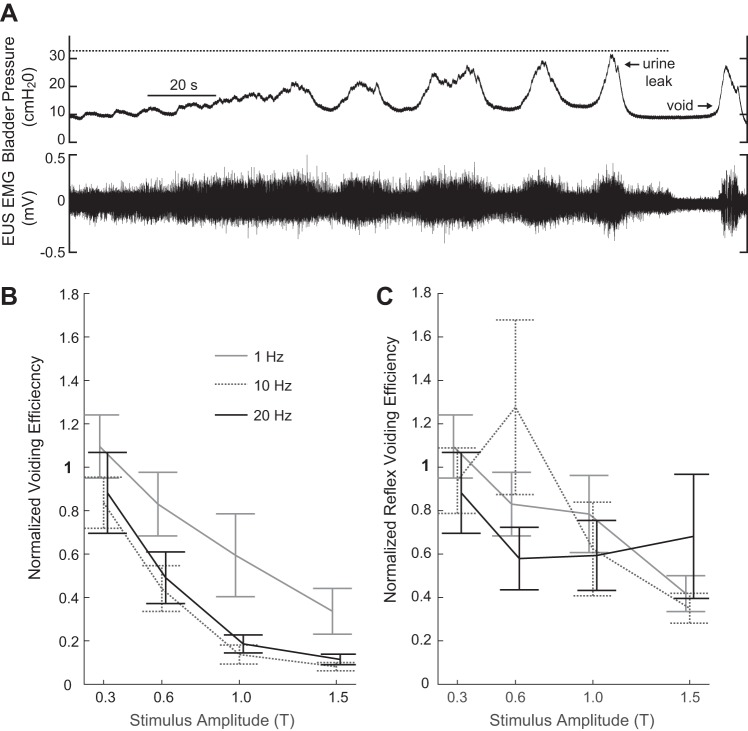Fig. 3.
Impact of sensory pudendal nerve stimulation on voiding efficiency. A: portion of a trial with stimulation at 1.5 T, 20 Hz illustrating stimulus termination following the first expulsion of urine. The expelled urine was collected and measured. If a second void occurred within 20 s of stimulus termination, the urine was collected separately and measured (n = 7 experiments). The volume from the first micturition event contributed to the normalized voiding efficiency. Values were normalized relative to nonstimulation control trials. Volumes from both the first micturition event and the second micturition event (if present) contributed to the normalized “reflex” voiding efficiency. B: summary data showing changes in voiding efficiency, relative to nonstimulation control trials, as a function of stimulus amplitude and pulse repetition frequency (means ± SE). Voiding efficiency varied as a function of amplitude and frequency (P < 0.001 for both amplitude and rate, two-way ANOVA) with no statistically significant interaction term (n = 7 for 0.3T to 1T, n = 6 for 1.5T, 20 Hz, and n = 5 for 1.5T, 1 and 10 Hz). Increasing stimulation amplitude decreased normalized voiding efficiency. This decrease was larger at 10 and 20 Hz than 1 Hz. C: waiting up to 20 s following stimulus termination elicited subsequent bladder contractions that resulted in the expulsion of additional fluid. Despite the increase in expelled fluid, voiding efficiency remained reduced for 1 Hz (P = 0.002) and 10 Hz (P < 0.001) at 1.5 T (the amplitude that led to the greatest increase in bladder capacity) relative to control levels.

